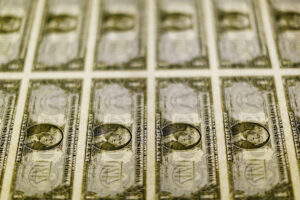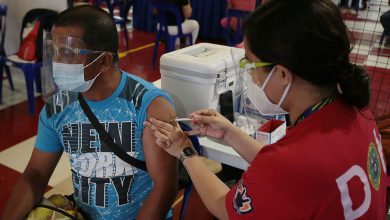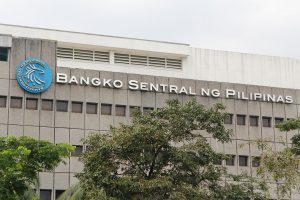Dollar reserves may drop further in coming months

THE Philippines’ foreign exchange reserves may decline further in the coming months as the central bank continues to prop up the local currency.
Data from the Bangko Sentral ng Pilipinas (BSP) showed gross international reserves (GIR) stood at $98.83 billion as of end-July, 2% lower than the $100.85 billion level as of end-June.
The dollar reserves fell below the $100-billion level for the first time since August 2020 when GIR stood at $98.95 billion. The GIR level has been decreasing since February this year.
ING Bank N.V. Manila Senior Economist Nicholas Antonio T. Mapa said the BSP has been one of the most aggressive central banks in building up the GIR to $110 billion during the pandemic.
“Regional central banks built up reserves during the height of the pandemic, cognizant of the fact that they would need them once policy normalization starts,” he said in an e-mail.
Amid the Federal Reserve’s aggressive tightening, Mr. Mapa noted Asian central banks have deployed the tandem of rate hikes and foreign exchange spot intervention.
“In the coming months, we can expect GIR drawdown and rate hikes to continue. This is why GIR buildup was done in the first place, so we will see prudent central banks put their hard-earned built-up reserves to good use to get through the current turbulent landscape of a Fed rate hike rampage,” Mr. Mapa said.
The peso touched its all-time low of P56.45 per dollar in July.
The Fed raised interest rates by 75 basis points (bps) in July. Coupled with earlier actions in March, May and June, the US central bank’s overnight interest rate is now at a level between 2.25% and 2.50%.
The BSP has raised benchmark interest rates by a total of 125 bps so far this year, as it seeks to tame inflation.
Rizal Commercial Banking Corp. Chief Economist Michael L. Ricafort said the country’s dollar reserves may still increase in the coming months amid expected rise in inflows from overseas Filipino workers remittances, business process outsourcing revenues, foreign tourism revenues, and foreign investment.
However, the GIR can be offset by the widening trend in the country’s trade deficit and some net foreign debt payments, Mr. Ricafort said.
BSP Governor Felipe M. Medalla told members of the Federation of Filipino Chinese Chambers of Commerce and Industry, Inc. in a virtual forum that the country’s foreign exchange buffer remains comfortable.
“On the other hand, our reserves are comfortable but not excessive. This is not the time to waste our bullets,” Mr. Medalla said.
The BSP is expecting a GIR of $108 billion for this year and $109 billion for next year.
The country’s foreign exchange buffer hit a record high of $110.12 billion in December 2020.
Also on Friday, Mr. Medalla signaled the possibility of a 50-bp increase in policy rates at its Aug. 18 meeting, as inflation quickened in July.
The consumer price index at the national level climbed 6.4% year on year in July, from 6.1% in June and 3.7% a year ago.
July was the fourth consecutive month that inflation went above the central bank’s 2-4% target range. The July inflation print was also the fastest growth in 45 months, or since the 6.9% logged in October 2018.
“Clearly that raises the probability rather than 25 (bps), but again, there are other (factors) that we will look at,” Mr. Medalla said. — Keisha B. Ta-asan




